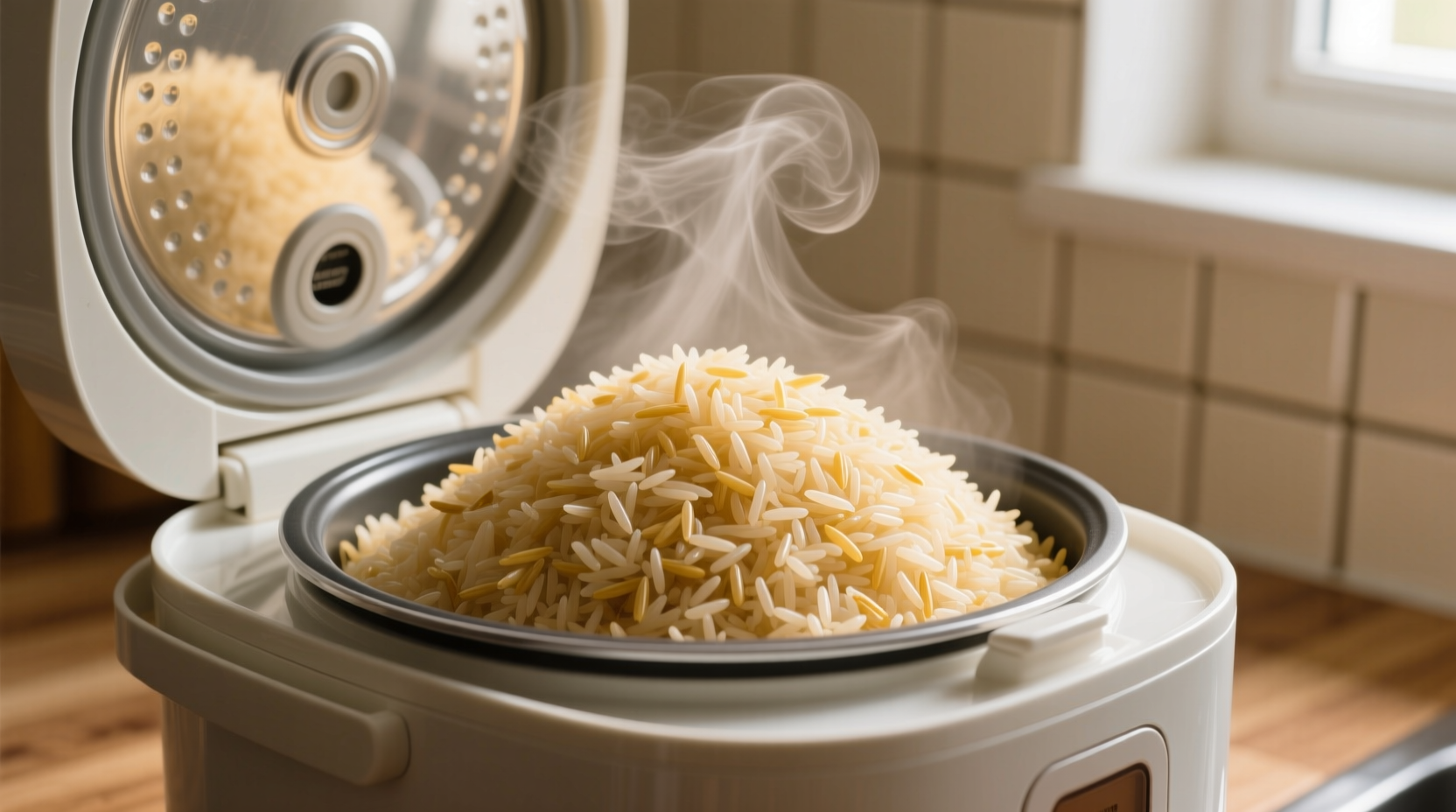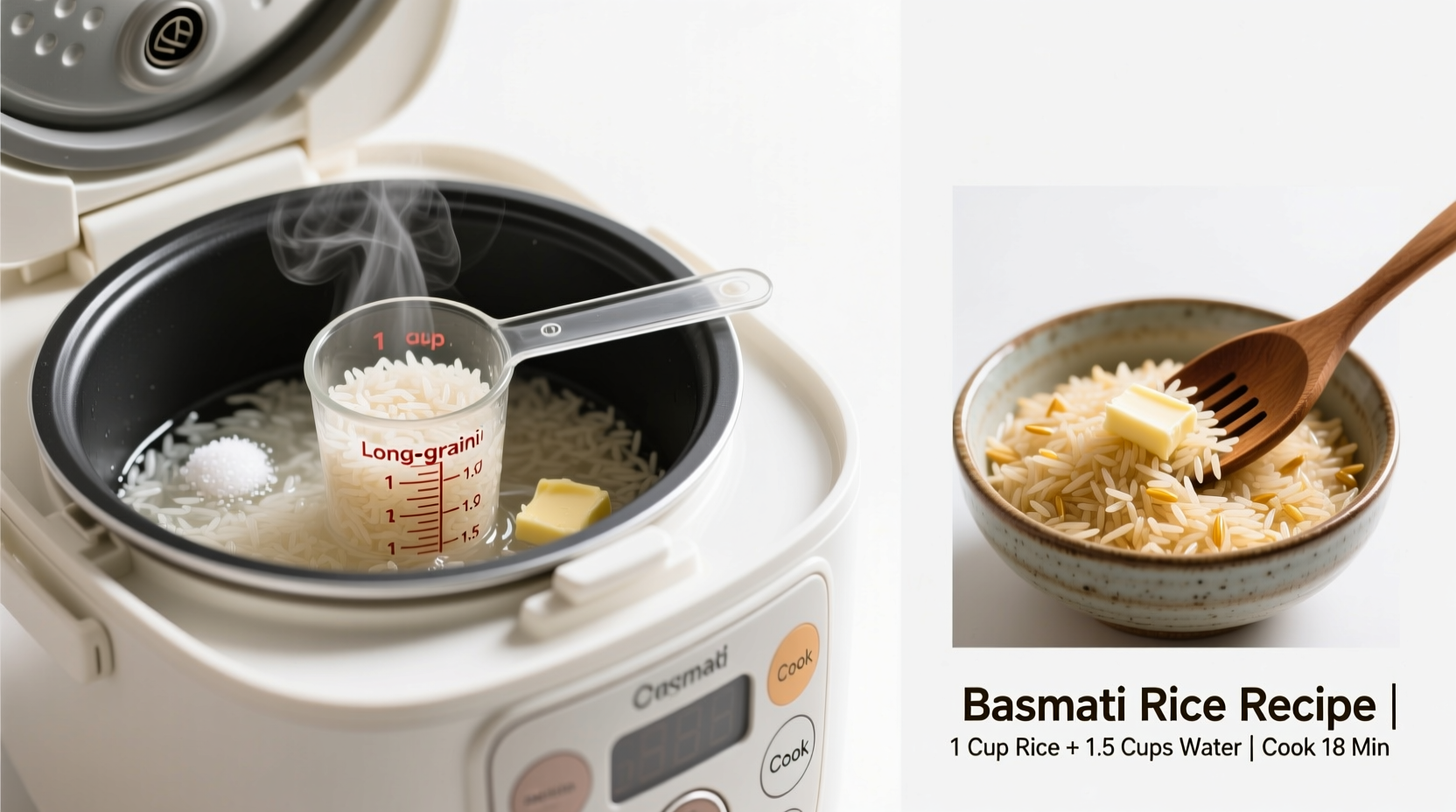Why This Method Works Every Time
Basmati rice requires precise water ratios and resting time to achieve that signature fluffy texture without becoming mushy. Unlike stovetop methods where heat control is critical, rice cookers maintain consistent temperature throughout the cooking process. The automatic switch from cooking to warming mode at precisely 212°F (100°C) prevents overcooking—a common issue when preparing this delicate long-grain rice.
What You'll Need
Before starting, gather these essentials for perfect basmati rice:
- 1 cup basmati rice (preferably aged for enhanced fragrance)
- 1.5 cups cold water (filtered if possible)
- Rice cooker with non-stick inner pot
- Fine-mesh strainer
- Wooden spoon or rice paddle
| Rice Type | Water Ratio | Soaking Time | Cooking Time |
|---|---|---|---|
| Basmati | 1:1.5 | 20-30 min | 18-25 min |
| Jasmine | 1:1.25 | 15 min | 15-20 min |
| Short-grain | 1:1.1 | None | 20-25 min |
Step-by-Step Cooking Process
Preparation Phase: Setting Up for Success
Rinse your basmati rice thoroughly under cold running water until the water runs clear—this removes excess starch that causes stickiness. Soak the rinsed rice in fresh water for 20-30 minutes; this critical step allows the grains to absorb moisture evenly, preventing breakage during cooking. According to research from the USA Rice Federation, proper soaking reduces cooking time by 15-20% while improving texture.
Cooking Phase: Precision Execution
After soaking, drain the rice completely and transfer it to your rice cooker. Add 1.5 cups of fresh cold water per cup of rice. For enhanced flavor, consider adding a pinch of salt and one whole cardamom pod (optional). Close the lid securely and select the 'white rice' setting if your cooker has multiple options. The cooking process typically takes 18-25 minutes depending on your rice cooker model.

Resting Phase: The Secret to Perfect Texture
When the rice cooker switches to 'warm' mode, resist the urge to open the lid immediately. Let the rice rest undisturbed for 10 minutes—this allows residual steam to finish cooking the grains evenly while preventing sudden temperature changes that cause condensation and mushiness. Food science research from the University of Minnesota Extension confirms that this resting period improves texture by allowing starch molecules to stabilize.
Finishing Touches: Fluffing and Serving
After resting, open the lid and gently fluff the rice with a wooden spoon or rice paddle, starting from the edges and moving toward the center. This separates the grains without breaking them. Serve immediately for the best texture and aroma.
Troubleshooting Common Issues
Problem: Rice is too wet or sticky
Solution: Reduce water ratio to 1:1.3 for your next batch. Ensure you're rinsing thoroughly until water runs clear.
Problem: Rice is undercooked or crunchy
Solution: Increase water ratio to 1:1.6 or extend soaking time to 30 minutes. Older rice typically requires slightly more water.
Problem: Burnt bottom layer
Solution: Check if your rice cooker needs cleaning—residue on the heating element affects temperature regulation. Always use the non-stick inner pot without additional coatings.
Storage and Reheating Tips
Store leftover basmati rice in an airtight container in the refrigerator for up to 4 days. For best results when reheating, sprinkle 1-2 teaspoons of water per cup of rice and cover with a damp paper towel before microwaving for 60-90 seconds. This technique, recommended by food safety experts at FDA Food Safety Education, restores moisture without making the rice soggy.
Variations for Special Occasions
For festive occasions, try these authentic variations:
- Lemon Rice: Add 2 tablespoons of fresh lemon juice and zest during the resting phase
- Saffron Rice: Steep 10-15 saffron threads in 2 tablespoons warm milk, drizzle over cooked rice
- Herbed Rice: Mix in 2 tablespoons chopped cilantro and mint after cooking











 浙公网安备
33010002000092号
浙公网安备
33010002000092号 浙B2-20120091-4
浙B2-20120091-4